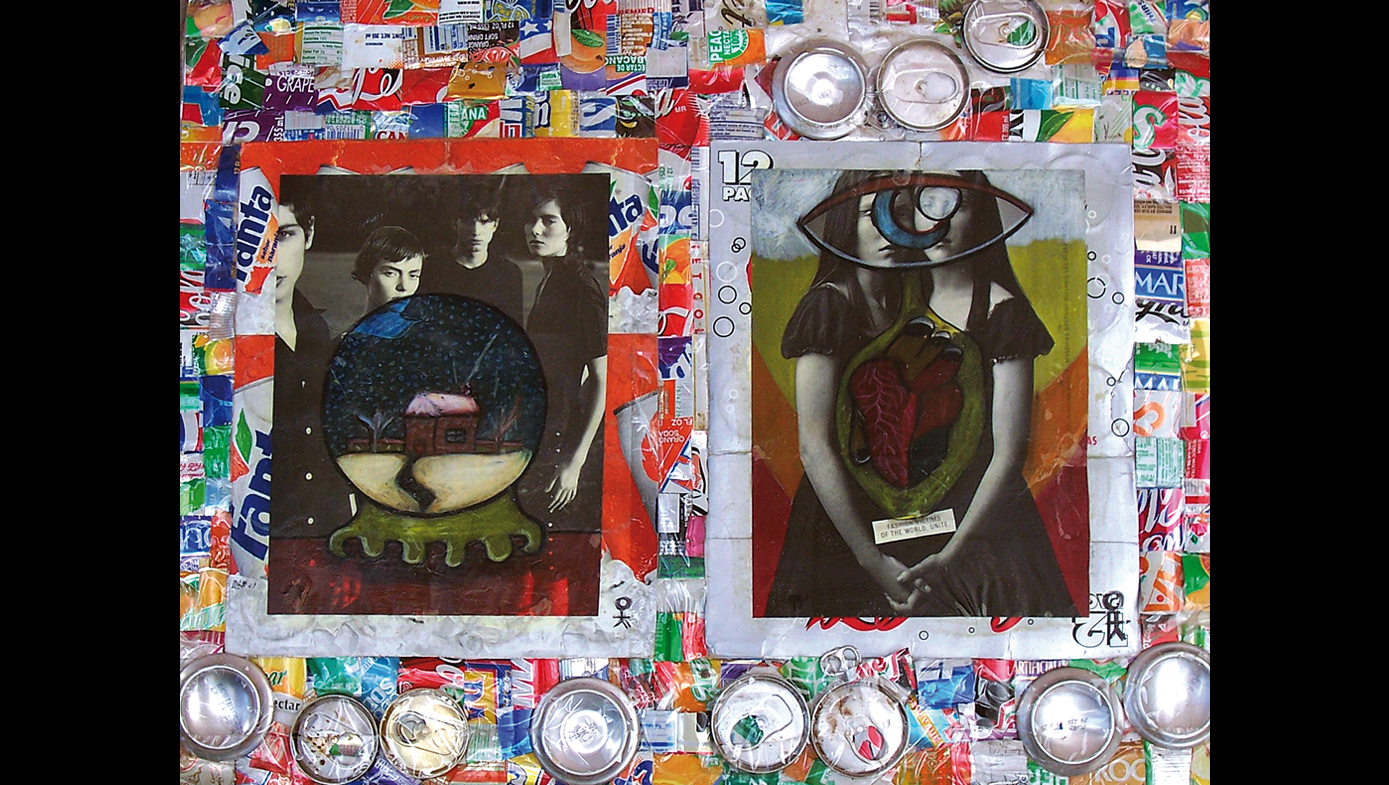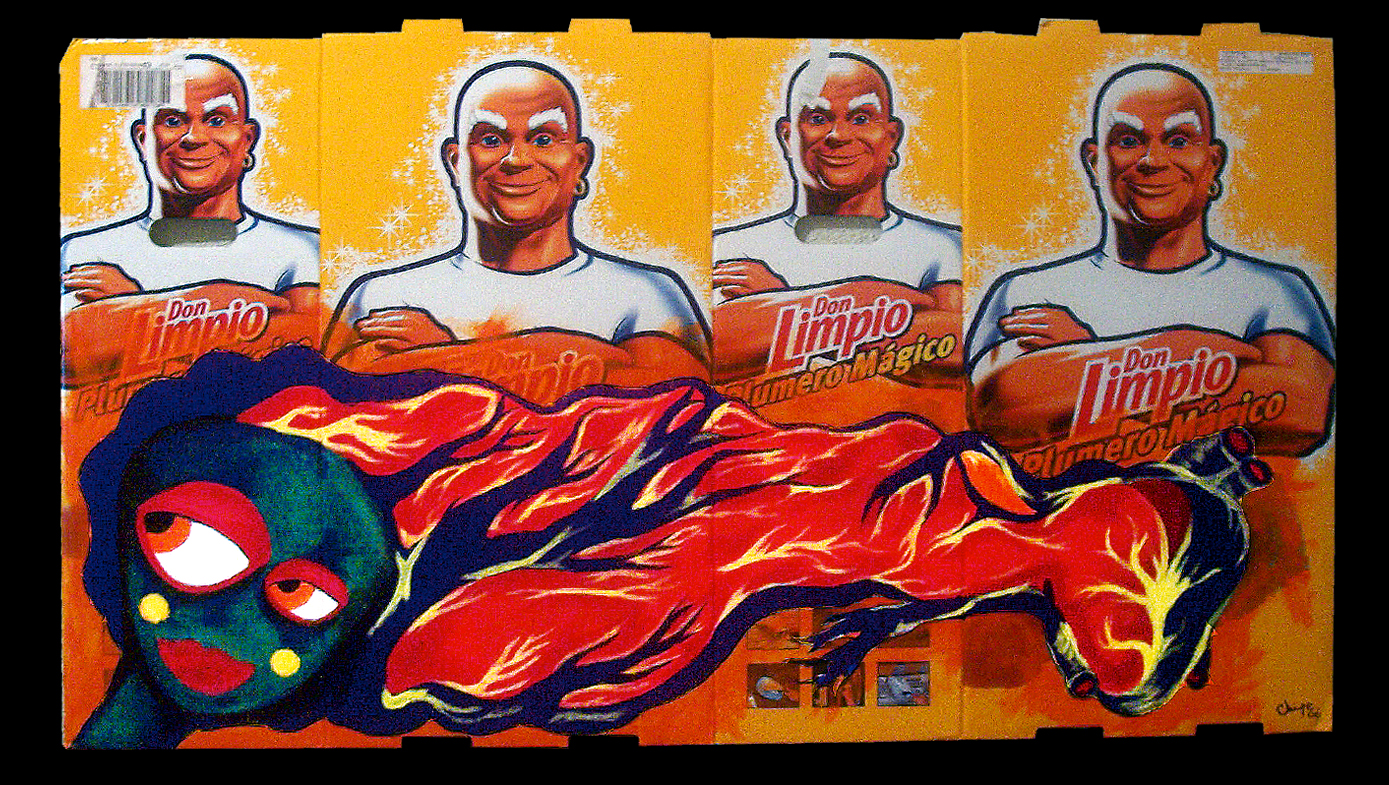Recycled art
Recyclable materials have been an important resource for Juan Pablo Chipe’s work, primarily in his paintings and installation projects as well as his exhibits. His RECIO fashion recycled project stands out as an example: it is a line of accessories that includes bags, wallets and purses made entirely out of recycling. He created a new fabric using discarded and recyclable materials, including cardboard, plastic and paper, giving these materials new life.
Juan Pablo Chipe, with his background in visual arts and a history of growing up near the border between Mexico and the United States, developed this project in stints between Tijuana and Los Angeles from 2001 to 2004. He continued the project in Europe from 2005 onward, revolutionizing traditional esthetic concepts from the fashion world, specifically through the notion of having trash in your closet in the form of a bag, wallet or purse.
In contrast to disposable culture, RECIO goes against the grain with recycled fashion, starting conversations and imposing style. The purses have a unique closure, made with the neck of a plastic bottle and cap. Don’t worry about losing the cap — you can always find a replacement in a nearby trash can!
About RECIO (fashion recycled) in Madrid.
by Alicia de los Santos (Historian)
Madrid, Spain
To carry a bag adorned with pads or curlers is nearly a provocation. People condemn the fact that there’s garbage everywhere, but you can simply sling it over your arm and go out for tea. Trash — this lowly prime material — is now leaving its impoverished surroundings and finding a home among the upper class. Whether it’s another step towards the democratization of things, or pure snobbery, recycling is fashionable.
On Friday January 21, 2005, at the Remember Madrid store in Chueca, people relished in the exhibit put on by Juan Pablo Chipe, which featured his collection of bags made out of newly remade materials. Milk cartons, detergent jugs, shampoo bottles, bags and pads were all turned into objects that had nothing to do with the original product. The results are amusing, decorative and useful.
Just as poverty has caused charity businesses to thrive — their inputs being those who are excluded from society — so too has garbage boosted the recycling industry, specifically in paper, plastic and metals. For some, this process is enough cause to believe in the fantasy that the solution to destroying the environment is simply to re-process the garbage we create. From this perspective, we can live with a clear conscience, ignoring that a society with boundless consumerism is doomed to destroy the planet and its occupants.
Eco-designers confront the challenge with greater imagination than their more traditional peers, and the results are not always beautiful. The mix of various types of plastic, for example, does not always create a cohesive or attractive product. Consumers look at three factors when they buy: beauty, quality and price. Environmental stewardship is just one other factor to think about at the time of purchase. As marketing experts attest: this is a niche market with a big future ahead.












